History of Saransk
Foundation of Saransk
Saransk was founded as a small wooden fortress on the bank of the Saranka River on the southeastern outskirts of the Tsardom of Russia in 1641. It was one of the many fortresses that served to protect against the raids of nomads from the Crimea and the Black Sea region. The fortress was called Saransky Ostrozhek.
The earliest description of the fortress dates back to 1703. It was almost square in shape with walls made of oak logs. In the corners there were four hexagonal towers up to 16 meters high, up to 8 meters in diameter, with platforms for cannons. Four more square towers were located in the middle of the walls.
The ninth tower stood in the center of the fortress and was used to store ammunition. On all sides, the fortress was surrounded by an earthen rampart and ditches. The Crimean-Kazan road ran through the northern and southern towers. Outside the fortress, around it, there were several villages.
The first residents of the fortress were Cossacks, firearm soldiers and gunners transferred to it from nearby towns, as well as the population of nearby villages. By the end of the 17th century, its population was about 4 thousand people.
More Historical Facts…
Saransk in the 18th - 19th centuries
In the early 18th century, Saransk lost its military significance. It gradually became a town of crafters and merchants (grain, hemp, timber, leather, meat, honey). This was favored by an advantageous geographical position - at the intersection of large horse-drawn tracts connecting Astrakhan with Moscow, Crimea with Kazan.
One of the most memorable historical events of the 18th century was the stay in Saransk of Emelyan Pugachev in July 1774, the leader of Pugachev’s Rebellion also called the Peasants’ War of 1773-1775. The coat of arms of Saransk was approved in 1781. In 1785, Catherine II approved a new development plan for Saransk with a rectangular street network. By the beginning of the 19th century, the population of the town reached 7.4 thousand people.
In the 19th century, a town bank (1844), the first small power plant (1886), a paid public library (1893), and a free public library (1899) appeared in Saransk. At the end of the century, the Moscow-Kazan railway passed through Saransk, which revived the economic life of the region. Nevertheless, the town did not become a large industrial center, its economy remained small-scale with a predominance of the agricultural sector. The population was about 14 thousand people.
In 1817, 1852 and 1869, there were three major fires in Saransk, in each of which several hundred houses were destroyed. Wooden buildings predominated in its urban development until the middle of the 20th century.
Saransk in the 20th century and beyond
During the Russian Civil War, Saransk was one of the centers of the formation of military units of the Red Army. The war led to hunger, unemployment, and a drop in production. Many enterprises of Saransk did not work for a long time due to the lack of fuel and raw materials.
In 1918, a local history museum was founded. By 1927, most of the enterprises and workshops that had existed before the Civil War were restored, and several new enterprises were created. In 1930, the radio station began broadcasting in Russian and Mordovian languages.
From July 16, 1928, Saransk became the center of the Mordovian District as part of the Middle Volga Region; from January 10, 1930 - the center of the Mordovian Autonomous Region; from December 20, 1934 - the capital of the Mordovian Autonomous Soviet Socialist Republic. In 1939, the population of Saransk was about 41 thousand people.
During the Second World War, food, ammunition, uniforms, vehicles for the Red Army were produced in Saransk. Several enterprises and institutions were turned into hospitals. In total, about 17 thousand residents of Saransk fought on the fronts of this war, more than 8 thousand of them perished.
In the post-war years, new industries were created in the city: electrical, engineering, medical, food industries, production of building materials. By 1959, the population increased to 91 thousand. In 1960, the construction of new residential districts began: the north-western (today known as Svetotekhstroy) and the south-western. In 1965, the first trolleybuses appeared in the city. The industrial and cultural development of Saransk continued. By the 1970s-1980s, the city turned into a developed industrial center. In 1987, its population exceeded 300 thousand people.
On December 7, 1990, the Mordovian ASSR was transformed into the Mordovian Soviet Socialist Republic; Saransk remained its capital. In 1991, the city became the capital of the Republic of Mordovia within the Russian Federation.
The unpreparedness of local enterprises for a market economy led to a significant decline in the socio-economic development of Saransk. The economic recovery in the early 2000s, which was observed in Russia, had a positive effect on Saransk too, including the development of urban infrastructure.
In June 2018, Saransk hosted four matches of the FIFA World Cup at the stadium “Mordovia Arena”. Saransk became one of 11 Russian cities hosting this major tournament. The capital of Mordovia was the most sparsely populated host city of the championship. In preparation for the event, a stadium, new roads and transport interchanges, hotels were built, the airport was reconstructed, and the public transport system was improved.
Architecture of Saransk
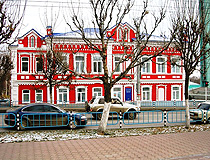
Museum of Mordovian Folk Culture in Saransk
Author: Alex Gorshkov
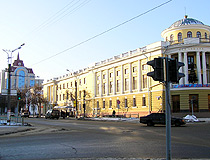
The House of Unions in Saransk
Author: Terentyev Vasily
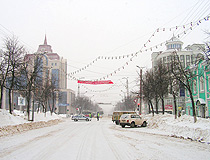
Winter in Saransk
Author: Yevgeny Patararkin
Saransk - Features
Saransk is one of the oldest Russian cities in the Middle Volga region. The City Day of Saransk is celebrated on June 12. The main industrial sectors in Saransk are lighting and electrical engineering, mechanical engineering and metalworking, the production of medicines, and the food industry.
The exact meaning of the symbols of the coat of arms of Saransk approved in 1781 remains unknown. According to the most widespread opinion, its composition could symbolize the main occupation of the indigenous Finno-Ugric peoples - fox hunting. Today, the image of a red fox is widely used as a symbol of Saransk.
The climate of the city is moderately continental, characterized by relatively cold, frosty winters and moderately hot summers. The average temperature in January is minus 9.6 degrees Celsius, in July - plus 19.9 degrees Celsius.
The airport of Saransk offers regular flights to Krasnodar, Moscow, St. Petersburg, Sochi. The branded train “Mordovia” runs from Saransk to Moscow every day. From Saransk on passing trains you can go to St. Petersburg, Nizhny Novgorod, Novorossiysk, Samara, Kazan, Yekaterinburg, and other cities. Public transport is represented by buses, trolleybuses, minibuses, and taxis.
Saransk is the capital of the national republic. As of January 1, 2010, Russians accounted for 70.7% of the population, Mordovians - 21.8%, Tatars - 4.8%, Ukrainians - 0.7%, Armenians - 0.2%, Belarusians - 0.2%, Chuvash - 0.1%, other nationalities - 1.5%. The Mordovians include the Finno-Ugric peoples Erzya and Moksha. They speak different languages ??and have different cultural customs.
Mordovian languages ??are taught in local schools and universities, programs in Erzyan and Mokshan can be seen on local television, newspapers are published in these languages. Street name plates and other city navigation are in three languages: Russian, Erzya and Moksha. But in Saransk, few people can speak them.
There are no especially old sights in Saransk. Once entirely wooden, in Soviet times, the city was completely rebuilt.
Main Attractions of Saransk
Cathedral of St. Fyodor Ushakov (2002-2006) - the largest Orthodox church in Saransk built in the Empire style with a neo-Byzantine dome and located on Sobornaya Square (the main square of the city). The height of this magnificent building is 60 meters. Inside you can see a beautiful gilded iconostasis.
Millennium Square. This square appeared in Saransk in 2012 as part of the celebration of the fact that the first Slavic settlers reached the Mordovian lands at the end of the 1st millennium AD. Since that time, the history of coexistence of the Russian and Mordovian peoples began. This large square is perfectly suited for walking and organizing public events.
The main attraction of the square is the color and music fountain “Star of Mordovia” - one of the largest and most majestic fountains in Russia. It is made in the form of a national Mordovian ornament - an eight-pointed star.
Mordovian Erzia Museum of Visual Arts. The world’s largest collection of works by the outstanding 20th century sculptor Stepan Dmitrievich Erzia (more than 200 works) is exhibited here. The museum presents collections of works of all major types of art: painting, graphics, sculpture. Collections of works of Russian art of the 18th-19th centuries, modern Russian art, Mordovian folk and decorative-applied art are also on display here. Kommunisticheskaya Street, 61.
Mordovian Republican Museum of Local Lore named after I.D.Voronin. The numerous collections of this museum are located in several branches. One of the largest branches is located in a new building constructed in the 2000s and resembling a classic 19th century palace.
In total, there are more than 200 thousand exhibits - household items, tools, weapons, national clothes, decorative and applied arts, old books and historical documents, a numismatic collection, as well as paleontological, botanical, entomological collections, stuffed animals and birds, etc. The permanent exhibition includes 3 departments: the history of Mordovia until 1917, the modern history of Mordovia, and the nature of Mordovia. Saranskaya Ulitsa, 2.
Museum of Mordovian Folk Culture. The building of this museum is a monument of urban architecture of the early 20th century. There are more than 3.5 thousand exhibits: Mordovian national clothes, household items, agricultural tools, icons, wooden sculptures, books, and photographs.
There are several thematic halls in which visitors can see exhibits dedicated to seasonal rituals of the Mordovians, Mordovian holidays, wedding customs, the life of Mordovian women, life and raising children in a Mordovian village. The exhibition hall of the museum regularly hosts exhibitions of works of Mordovian artists and handicrafts. Sovetskaya Street, 19.
Museum of Military and Labor Feat. The collection of this museum is part of the memorial complex created to commemorate the 50th anniversary of the victory in World War II in 1995. The museum building is quite unusual - its facade is composed of multi-colored granite slabs in the colors of the St. George ribbon, the shape of the building resembles the outlines of the borders of Mordovia. The exposition is located in four halls, next to it there is an open area with an exhibition of military equipment. Sovetskaya Street, 34?.
Church of St. Nicholas the Wonderworker - a late 19th century church built in an architectural style that imitates classical Russian architecture. The facade and walls are made of red bricks. In Soviet times, the church was not used for its intended purpose, but its appearance did not suffer from this at all. The building has survived to this day in its original form. In 1990, it was returned to the believers. Volgogradskaya Street, 90.
Church of St. John the Theologian (1693) - the oldest building in Mordovia, an architectural monument of federal significance. It was rebuilt several times, but insignificantly, and in general it retained the same look that was given to it during the construction. Demokraticheskaya Street, 28.
Recreation park named after A.S. Pushkin. This park was founded in the 19th century, when the first trees were planted in one of the city squares around the church. The current territory of the park is about 40 hectares. In recent years, new rides have appeared here, and a boat and catamarans rental station has been opened on the bank of the river. On the territory of the park there is a city zoo, a Ferris wheel, a monument to Fyodor Ushakov, a hotel, a flower calendar, and a live green portrait of Pushkin. Moskovskaya Street.


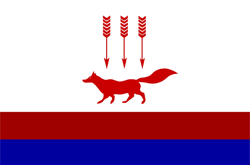
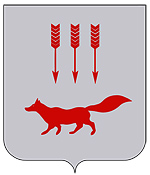
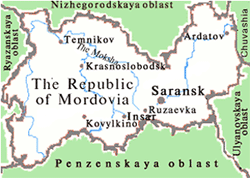



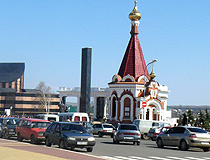
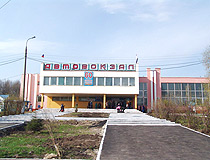
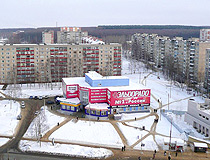
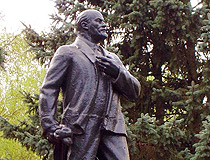
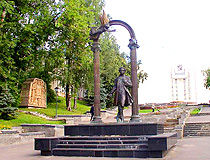
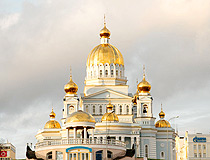
The comments of our visitors